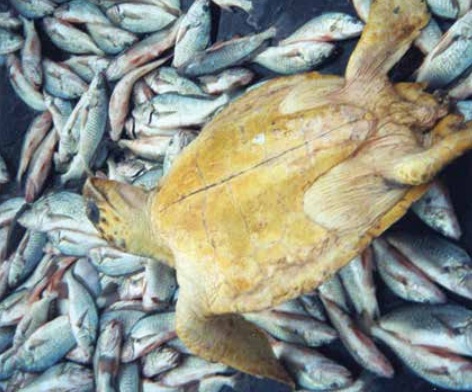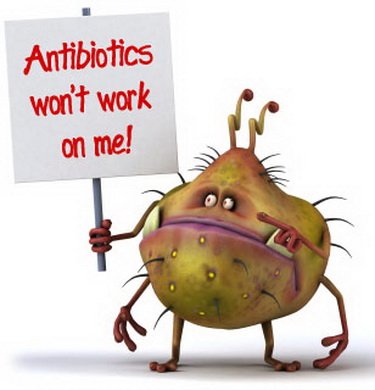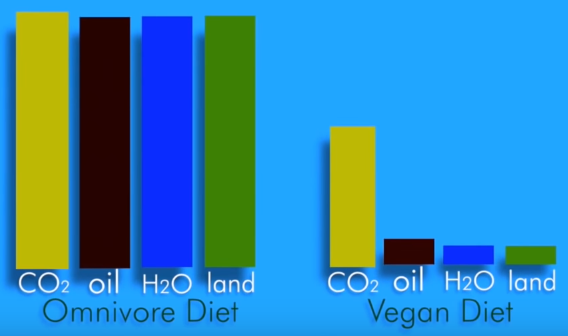10 Ways Eating Plant-Based Saves the World
/There are many urgent global problems in our world that cannot be ignored. We need to take action to keep these problems from escalating and eventually solve them. The good news is we can help solve many of these problems simply by the way we eat. Here are 10 ways eating plant-based saves the world.
1. Climate Change
According to the Food and Agriculture Organization of the United Nations, animal agriculture is responsible for 18 percent of greenhouse gas emissions. Transportation exhaust, on the other hand, is responsible for only 13 percent of all greenhouse gas emissions. [1] By eating plant-based, 18 percent of all greenhouse gas emissions can be eliminated!
2. Water Waste
The Center for Science in the Public Interest states that only 5% of water consumed in the US is by private homes. The majority, 55% of water consumed in the US, is used for animal agriculture. [2] Taking a shorter shower is wonderful, but add eating plant-based and it will have 11 times the impact!
3. Ocean Extinction
An article in the world-renowned peer-reviewed journal Science projects the global collapse of all species currently fished by the year 2048. [3] A March 2014 Oceana Bycatch Report found that as many as 650,000 whales, dolphins, and seals are killed every year by fishing vessels. [4] Additionally, a paper published in the peer-reviewed journal Marine Policy found that about 100 million sharks are killed each year, either for consumption or simply as bycatch. [5] We can do so much for the oceans just by eating plant-based.
4. Rainforest Destruction
The majority of rainforest destruction is a direct result of eating animals and their byproducts. According to a World Bank Working Paper, animal agriculture is responsible for up to 91% of Amazon rainforest destruction. [6] By eating plant-based, only 9 percent of the current rainforest destruction will remain. Rainforest destruction results in the extinction of up to 137 plant, animal, and insect species every day! [7]
5. Starvation
A shocking 82% of starving children live in countries where their food is fed to animals which are then sold in other countries. [8] If no food was used for animal agriculture, there would be enough food to feed 10 billion people. [9] Eating plant-based would mean that no one in this world would have to starve.
6. Antibiotic Resistance
Superbugs are strains of bacteria that are resistant to the majority of antibiotics commonly used today. They are formed as a result of the overuse and misuse of antibiotics. The Centers for Disease Control and Prevention (CDC) estimates that antibiotic-resistant infections sicken at least 2 million people every year and that more than 23,000 die as a result. This is a growing problem that we face. By some estimates, about 80 percent of antibiotics sold in the US are used in animals, not humans. [10] Eating plant-based would reduce the use of antibiotics in the US to only 20% and slow the growth of superbugs.
7. The Number One Cause of Death in the US
Heart disease is the number one cause of death in the United States and responsible for over half a million deaths annually. Eating a whole food plant-based diet can not only prevent but even reverse most heart disease. [11] Eliminating heart disease would save the United States $48 trillion in economic value over the long run. [12]
8. Poisoning Food Supply
Two million pounds of arsenic-containing drugs are fed to chickens each year in the US alone despite all the environmental regulations. [13] Just imagine how many more millions of pounds are fed to chickens outside the US! These chickens are fed to humans who get poisoned. Many dead chickens are also fed to other animals consumed by humans which results in even more poisoning.
All the arsenic-bearing poultry manure is then used as fertilizer which poisons the soil. All crops grown in such soil absorb the arsenic. This effects even plant-based eaters. Thus, there are many ways in which all of us suffer the negative health consequences of arsenic-containing drugs fed to chickens. [14]
9. Planetary Impact
Embracing a plant-based diet will save 1,100 gallons of water, 45 pounds of grain, 30 sq ft of forested land, 20 lbs CO2 equivalent, and one animal’s life per person per day. Such a diet will also reduce carbon dioxide emissions by 50%, use 91% less crude oil, 92% less water, and 94% less land than an omnivorous standard American diet. [15]
10. Ocean Dead Zones
Eating plant-based can help heal ocean dead zones. These dead zones are mainly caused by animal agriculture. Poisoned and excess manure and fertilizer from livestock make their way into the ocean where they cause algal blooms. These blooms absorb oxygen from the water and suffocate marine life which creates dead zones. [16], [17], [18]
These algal blooms may seem like a far-off thing, but I’ve had to face one personally. In the summer of 2014, there were toxic algal blooms in Lake Erie which was the water source of my city. The city issued a "do not drink" advisory for three days. My family and I had to drink only bottled water and there was a shortage of even that.
Such algal blooms are not restricted to just the Great Lakes. They are found in polluted inland lakes from Minnesota to Nebraska to California, and even in the glacial-era kettle ponds of Cape Cod in Massachusetts. [19]
World Scientists’ Warning to Humanity: A Second Notice
In December 2017, the World Scientists’ Warning to Humanity: A Second Notice was published in the journal BioScience. [20] The notice now has over 20,000 signatures and endorsements from scientists. The paper is actually an update to the first notice published 25 years before which warned that "Human beings and the natural world are on a collision course." It then described trends such as the growing hole in the ozone layer, pollution, and depletion of freshwater sources, overfishing, deforestation, plummeting wildlife populations, as well as unsustainable rises in greenhouse gas emissions, global temperatures, and human population levels.
The second notice said that humanity has failed to progress on most of the measures and has warned that time is running out. The authors of the paper then called upon everyday citizens to take immediate action.
As you now know, one of the easiest and most effective ways to start saving the planet is to eat plant-based! We should choose more plants over animals at our next meal. Even if you can’t become 100% plant-based, any step in the direction of eating more plants and fewer animals will help save the world. This simple choice is yours to make.
Sources:
[1] http://www.fao.org/docrep/010/a0701e/a0701e00.HTM
[2] https://cspinet.org/resource/six-arguments-greener-diet
[3] https://cdn.ioos.noaa.gov/media/2017/12/worm-et-al.pdf
[4] http://oceana.org/sites/default/files/reports/Bycatch_Report_FINAL.pdf
[6] http://documents.worldbank.org/curated/en/758171468768828889/pdf/277150PAPER0wbwp0no1022.pdf
[7] https://www.scientificamerican.com/article/earth-talks-daily-destruction/
[8] http://comfortablyunaware.com/blog/the-world-hunger-food-choice-connection-a-summary/
[10] https://www.foodsafetynews.com/2015/12/2015-in-review-animal-antibiotics/#.WPpdntxFfIU
[11] http://www.dresselstyn.com/site/books/prevent-reverse/about-the-book/
[13] https://noharm.org/sites/default/files/lib/downloads/food/Feeding_Arsenic_to_Poultry.pdf
[14] https://nutritionfacts.org/video/how-many-cancers-have-been-caused-by-arsenic-laced-chicken/
[15] www.cowspiracy.com/facts/
[16] https://www.onegreenplanet.org/environment/how-factory-farm-run-off-threatens-marine-life/
[18] https://mission-blue.org/2015/02/whats-the-role-of-mass-animal-agriculture-in-ocean-degradation/
[19] https://www.nytimes.com/2014/08/05/us/lifting-ban-toledo-says-its-water-is-safe-to-drink-again.html











